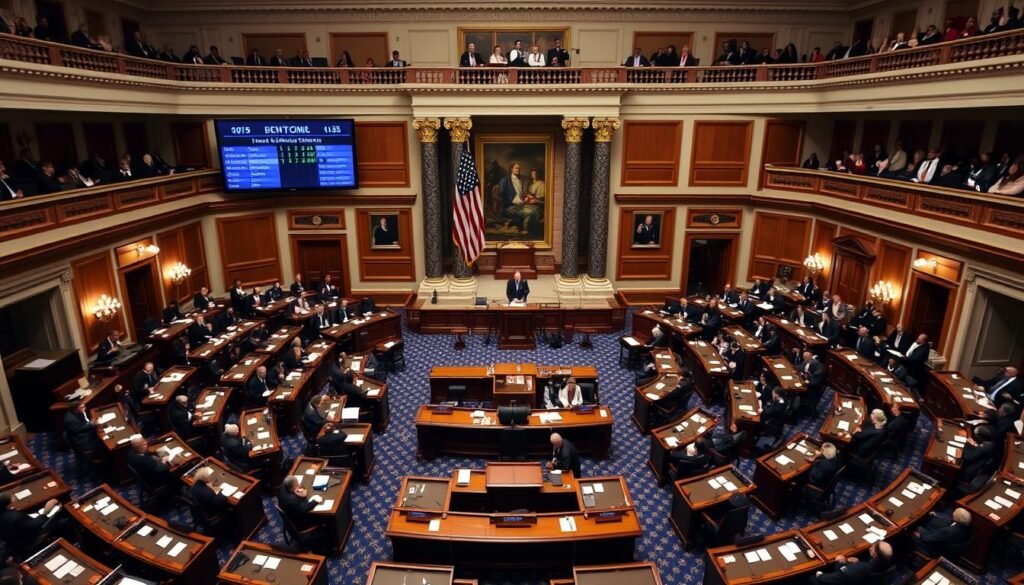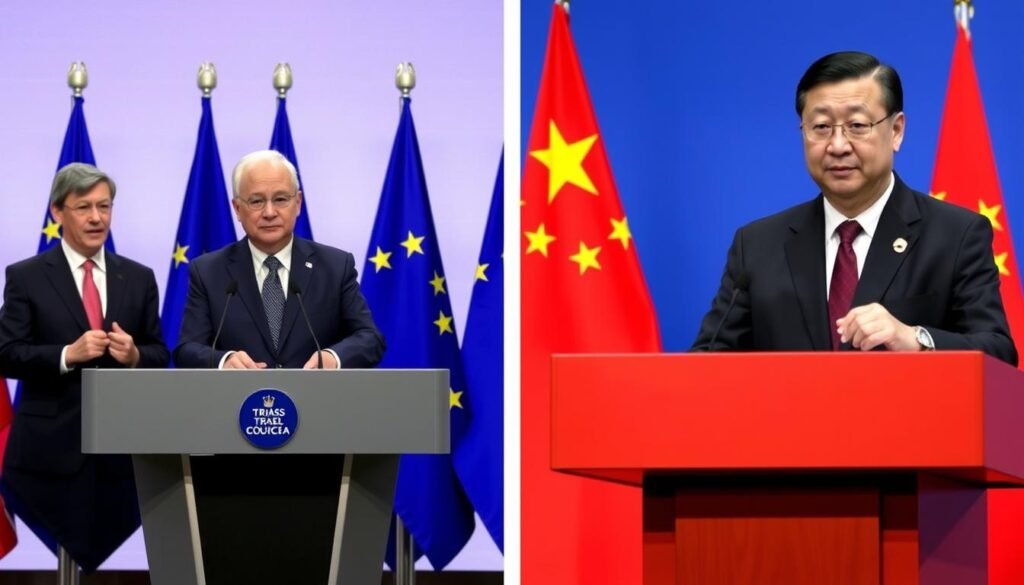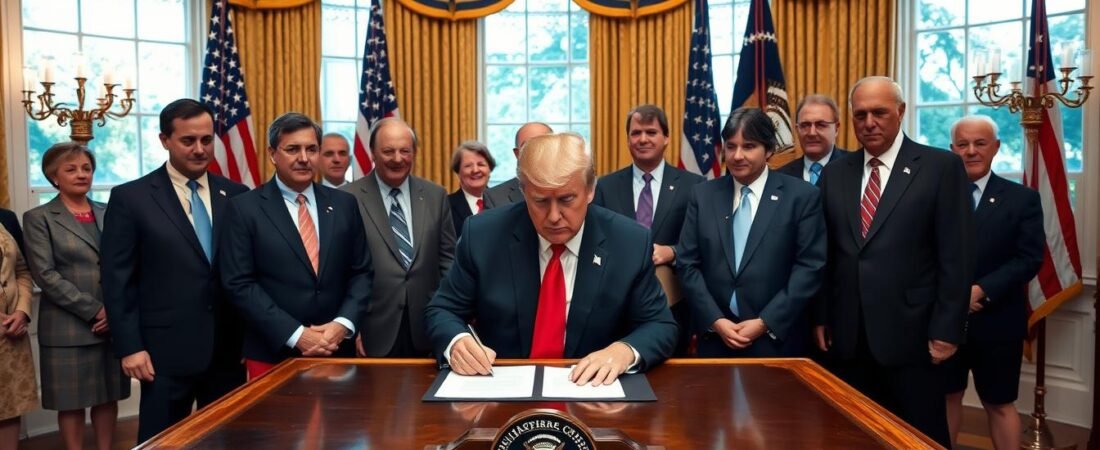President Donald Trump’s “Big Beautiful Bill” represents a potential watershed moment for American trade policy. With the U.S. trade deficit reaching $951 billion in 2022—a 12% increase from pre-pandemic levels—this comprehensive legislation could fundamentally reshape America’s economic relationship with the world. This analysis examines how the bill’s provisions might alter trade dynamics, comparing it with historical approaches and exploring expert perspectives on its potential global impact.
President Trump signs the “Big Beautiful Bill” into law, marking a significant shift in U.S. trade policy
Historical Context: America’s Evolving Trade Approach
To understand the significance of the Big Beautiful Bill (BBB), we must examine how U.S. trade policy has evolved over decades. The post-World War II era saw America champion global trade liberalization, culminating in the 1994 North American Free Trade Agreement (NAFTA) and the establishment of the World Trade Organization (WTO) in 1995.
However, the 2008 financial crisis and subsequent economic challenges shifted this paradigm. U.S. manufacturing output rose 3.4% in 2023, yet America’s reliance on imports persists, with the trade deficit remaining stubbornly high at $773.4 billion in 2023 according to the U.S. Census Bureau.
U.S. trade deficit trends (2000-2024) with projected BBB impact
Dive Deeper Into Trade History
Access our comprehensive timeline of U.S. trade policy from the Clinton era through the Big Beautiful Bill. Understand the context behind today’s trade challenges.
Key Trade Provisions in the Big Beautiful Bill
The Big Beautiful Bill contains several provisions that could significantly alter America’s trade posture. Unlike previous administrations’ approaches, the BBB combines tariff measures with domestic investment incentives and supply chain restructuring.
Tariff Enforcement
Expands authority for implementing tariffs up to 60% on Chinese goods and 10-25% on other trading partners. The Congressional Budget Office estimates this could generate $200 billion in revenue over 10 years but warns of potential retaliatory measures.
Reshoring Incentives
Provides $150 billion in tax credits for companies relocating manufacturing operations to the United States. Targets critical industries including semiconductors, pharmaceuticals, and clean energy components.
Digital Trade Framework
Establishes new rules for cross-border data flows, digital services taxation, and intellectual property protection. Creates a Digital Trade Office within the U.S. Trade Representative to enforce these provisions.
| Trade Policy Element | Big Beautiful Bill | Biden’s IRA (2022) | Trump 1.0 (2017-2021) | Obama Era (2009-2017) |
| Average Tariff Rates | 10-60% (targeted) | Maintained Trump tariffs | 7.5-25% (China-focused) | 3.5% (average) |
| Reshoring Incentives | $150B tax credits | $52B (CHIPS Act) | Corporate tax cuts | Limited programs |
| Trade Agreement Focus | Bilateral deals | Indo-Pacific Framework | USMCA, bilateral | TPP (multilateral) |
| WTO Engagement | Limited/conditional | Re-engagement | Appellate body blocked | Full participation |
Expert Perspectives on the Big Beautiful Bill’s Trade Impact
“The Big Beautiful Bill represents the most significant pivot in U.S. trade policy since NAFTA. While it addresses legitimate supply chain vulnerabilities, the aggressive tariff provisions risk triggering retaliatory measures that could harm American exporters and consumers.”
Potential Benefits
Former U.S. Trade Representative Robert Lighthizer argues that the BBB “finally addresses the fundamental imbalances in America’s trade relationships.” He points to the bill’s reshoring incentives as critical for rebuilding domestic manufacturing capacity, particularly in strategic sectors like semiconductors and pharmaceuticals.
The American Enterprise Institute’s analysis suggests the bill could create up to 2.3 million manufacturing jobs over the next decade if fully implemented. However, this projection assumes limited retaliatory actions from trading partners.
Potential Risks
World Trade Organization economists warn that the bill’s tariff provisions could trigger a cascade of retaliatory measures. A June 2024 WTO report estimates that global trade could contract by 1.2% if major economies respond with equivalent tariffs.
Dr. Chad Bown of the Brookings Institution notes that “while reshoring critical industries has merit, broad tariffs often lead to higher consumer prices and reduced export opportunities as other countries respond in kind.”
Expert Analysis Delivered to Your Inbox
Stay informed with monthly insights from leading trade policy experts as the Big Beautiful Bill’s implementation unfolds.
The Legislative Divide: Congressional Perspectives
The Big Beautiful Bill passed the Senate with a narrow 52-48 vote, revealing deep partisan divisions over America’s trade future. Senate Republicans largely supported the bill’s “aggressive tariff enforcement” provisions, while House Democrats expressed concerns about potential consumer price increases.

The Senate’s narrow 52-48 vote on the Big Beautiful Bill highlighted deep partisan divisions
Republican Support
Senator Marco Rubio (R-FL), a key supporter, argued that “for too long, America has been taken advantage of in trade deals. This bill finally puts American workers and businesses first.” Senate Finance Committee Chairman Mike Crapo (R-ID) emphasized that the bill would “restore balance to trade relationships that have disadvantaged American producers for decades.”
Democratic Opposition
House Ways and Means Ranking Member Richard Neal (D-MA) criticized the bill’s approach: “While we all support American manufacturing, blanket tariffs are a blunt instrument that will raise prices for working families.” Senator Sherrod Brown (D-OH), despite his manufacturing state constituency, expressed concerns about the bill’s “lack of worker protections.”
Global Implications: How the World Is Responding
The Big Beautiful Bill has already triggered responses from major trading partners. The European Union has announced plans for “rebalancing measures” if the bill’s tariff provisions are fully implemented. Meanwhile, China’s Commerce Ministry warned of “proportional countermeasures” that could target American agricultural exports and technology companies.
Compared to other major trade initiatives like the EU’s Carbon Border Adjustment Mechanism or China’s Belt and Road Initiative, the BBB takes a more unilateral approach. While the EU’s carbon border tax works within WTO frameworks, the BBB challenges several WTO principles, potentially weakening the multilateral trading system.
European Union
Preparing €15 billion in retaliatory tariffs targeting American agricultural products, motorcycles, and bourbon. Simultaneously accelerating trade deals with Mercosur and ASEAN nations to reduce U.S. dependency.
China
Announced “comprehensive countermeasures” including increased tariffs on American soybeans, aircraft, and semiconductors. Accelerating its “dual circulation” strategy to reduce dependence on U.S. markets and technology.
Developing Economies
Nations like Vietnam, Malaysia, and Mexico are positioning themselves as alternative manufacturing hubs as companies seek to diversify supply chains away from both China and potentially higher-tariff U.S. markets.

EU and Chinese officials announce formal responses to the Big Beautiful Bill’s trade provisions
Business Impact: Winners and Losers
The Big Beautiful Bill creates a complex landscape of potential winners and losers across American industries. Companies with significant domestic manufacturing capacity stand to benefit from both tariff protection and reshoring incentives, while those reliant on global supply chains face increased costs and complexity.
Potential Winners
- U.S. Steel producers (77% capacity utilization in 2023, projected to reach 85% by 2026)
- Domestic semiconductor manufacturers (projected 35% production increase)
- Pharmaceutical companies with U.S. manufacturing facilities
- Defense contractors benefiting from “Buy American” provisions
- Logistics companies specializing in reshoring operations
Potential Challenges
- Consumer electronics companies (potential 7-12% cost increases)
- Agricultural exporters vulnerable to retaliatory tariffs
- Apparel and footwear retailers reliant on Asian manufacturing
- Automotive manufacturers with integrated North American supply chains
- Technology companies with significant Chinese market exposure

American manufacturing facilities could see increased production under the Big Beautiful Bill’s reshoring incentives
“Companies need to develop dual strategies—one that capitalizes on the bill’s reshoring incentives while simultaneously preparing for potential disruptions to global supply chains and export markets. This isn’t just about tariffs; it’s about fundamentally rethinking global business models.”
Industry-Specific Impact Analysis
Download our detailed report on how the Big Beautiful Bill will affect your specific industry, with actionable strategies for navigating the changing trade landscape.
Future Outlook: What’s Next for American Trade Policy
The Big Beautiful Bill marks what could be the beginning of a fundamental realignment in American trade policy. Implementation challenges, potential legal challenges at the WTO, and the possibility of negotiated compromises with trading partners will shape its ultimate impact.
According to the Peterson Institute for International Economics, full implementation could reduce global GDP by 0.5% by 2028 but potentially increase U.S. manufacturing employment by 1.2 million jobs. However, these projections assume limited retaliatory actions and successful legal defenses at the WTO.

Economists debate the long-term implications of the Big Beautiful Bill for global trade
When will the Big Beautiful Bill’s trade provisions take effect?
The bill establishes a phased implementation schedule. Initial tariff provisions begin 90 days after enactment, while reshoring incentives become available in the 2025 tax year. Digital trade provisions have a one-year implementation period to allow for regulatory framework development.
How might the WTO respond to potential violations?
The WTO dispute settlement mechanism could rule against certain provisions, particularly the targeted tariffs. However, with the WTO Appellate Body currently non-functional due to U.S. blocking of judge appointments, enforcement mechanisms remain limited. This creates a period of uncertainty in the global trading system.
Could future administrations reverse these policies?
While executive actions on tariffs could be modified by future administrations, the legislative components of the Big Beautiful Bill would require congressional action to reverse. The reshoring incentives, in particular, create multi-year commitments that would be difficult to unwind without significant economic disruption.
Conclusion: A New Chapter in American Trade Policy
The Big Beautiful Bill represents the most significant shift in U.S. trade policy in decades. By combining aggressive tariff measures with substantial reshoring incentives and digital trade frameworks, it signals a fundamental reorientation of America’s approach to global commerce.
Whether this approach will successfully address long-standing trade imbalances while avoiding damaging trade conflicts remains to be seen. What is clear is that businesses, trading partners, and policymakers must prepare for a period of significant adjustment as these provisions take effect.
As implementation proceeds, continued analysis of economic impacts, legal challenges, and international responses will be essential for navigating this new trade landscape. The coming years will determine whether the Big Beautiful Bill marks a sustainable new direction for American trade policy or a temporary deviation from decades of global economic integration.
Stay Informed on Trade Policy Developments
Subscribe to our quarterly trade policy briefing to receive expert analysis on how the Big Beautiful Bill’s implementation is reshaping global commerce.
